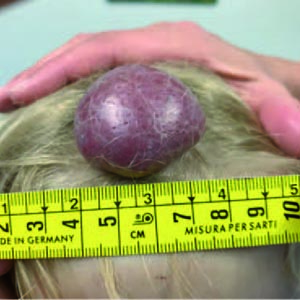Case Reports
Vol. 44 No. 1 (2022)
Surgical management of large scalp infantile hemangioma in 30-month-old infant

Publisher's note
All claims expressed in this article are solely those of the authors and do not necessarily represent those of their affiliated organizations, or those of the publisher, the editors and the reviewers. Any product that may be evaluated in this article or claim that may be made by its manufacturer is not guaranteed or endorsed by the publisher.
All claims expressed in this article are solely those of the authors and do not necessarily represent those of their affiliated organizations, or those of the publisher, the editors and the reviewers. Any product that may be evaluated in this article or claim that may be made by its manufacturer is not guaranteed or endorsed by the publisher.
Received: 17 November 2021
Accepted: 8 March 2022
Accepted: 8 March 2022
2793
Views
646
Downloads
197
HTML







